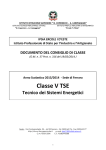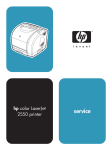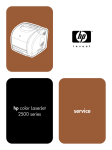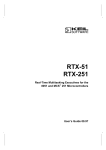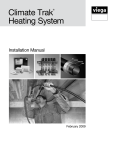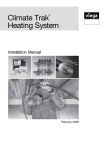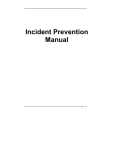Download Training Manual
Transcript
AUSPEX RADIANT UNDERFLOOR HEATING TRAINING MANUAL Contents INTRODUCTION 4 COMPONENT LIST 8 DESIGN PRINCIPLES 12 SYSTEM CONFIGURATION 19 PIPE LAYOUTS 20 PRE INSTALLATION CHECKS 22 STEP BY STEP GUIDES 25 Installation 26 Filling and Venting 32 Pressure Testing 35 Commissioning and System Start Up 38 APPENDIX 1. Basics of Zoning and Controls 40 APPENDIX 2. Commissioning Test Certificate 41 AUSPEX RADIANT UNDERFLOOR HEATING 3 BENEFITS OF THE AUSPEX RADIANT UNDERFLOOR HEATING SYSTEM 4 AUSPEX RADIANT UNDERFLOOR HEATING THE BASIC IDEA The ground floor in many houses is made up of a large slab of concrete or is constructed with wooden joists and plywood floors. The basic idea is to use this floor area as a radiator. Coils of pipe run under the floor, supplied with heated water which circulates through the coils. The surface temperature required to produce a comfortable temperature in this application is much lower than in a conventional ducted air or wet radiator system, and the heat is produced where it is most needed. HISTORY OF UNDERFLOOR HEATING Underfloor heating is not a new idea; over 2000 years ago the Romans developed warm air underfloor heating systems known as hypocausts, taking their name from the Greek meaning ‘heat from below’. These were built so widely that original examples (not still working) can be found at sites all over the former Roman Empire even today. The floor was raised above the ground by pillars so that hot air and smoke from furnaces could pass through these enclosed areas and heat the room above. In the early 1980’s there were still examples of the modern warm air systems in use but these were going out of fashion and were being replaced with wet radiator systems. At the same time electric underfloor systems, installed in the 1960’s, were also going out of favour because of running cost and practical control problems. The running cost problems often arose as a result of the way they were run and the generally poor levels of home insulation. The availability of more sophisticated types of control and improved levels of insulation has helped to encourage the current growth in underfloor heating systems. REDUCED FUEL COSTS CAN SAVE ON GAS BILLS. HIGHER COMFORT LEVEL, WITH EVEN HEAT. THE HEATING SYSTEM IS OUT OF SIGHT (PROTECTED FROM ANY EXTERNAL DAMAGE). THE DUST AND AIRBORNE PARTICLES LIKE POLLEN ARE NOT SPREAD SO QUICKLY THROUGH THE BUILDING, WHEN COMPARED WITH FORCED AIR SYSTEMS. THE HOUSE IS LEFT A MORE HEALTHY, ALLERGY-FREE ENVIRONMENT. QUIET OPERATION AND NO DISTURBANCE FROM BACKGROUND NOISE OR AIR MOVEMENT FROM DUCTED AIR HEATING SYSTEMS. AUSPEX RADIANT UNDERFLOOR HEATING 5 HOW THE SYSTEM WORKS Underfloor heating is the closest form of heating that achieves the ideal temperature profile which gives the greatest comfort. The most acceptable indoor climate is a floor surface temperature of between 22 and 26°C and the temperature around the head at 19 to 20°C. Underfloor heating circulates water under the floor at about 27°C creating a temperature in the lower part of the room of 20 to 21°C, and tapering off to 19 to 20°C around the head. Other heat emitters like ducted air push hot air around the room producing higher temperatures around the head as high as 24°C, but only 16°C around the body. Therefore, compared with other available heating systems, underfloor heating creates a higher level of comfort by truly surrounding the body with warmth. As underfloor heating relies on a large thermal mass like concrete, it can achieve optimum thermal comfort at much lower temperatures which leads to fuel cost savings. Running at lower temperatures, it also allows for use of more efficient heat sources such as condensing gas boilers, again lowering the running costs. By comparison, ducted air cannot achieve efficiencies as low as warm water underfloor heating due to air having a lower heat capacity than water. Ducted air also increases heat loss by increasing air infiltration with airflow. Additionally, the heat loss from the floor needs to be compensated for with a ducted air system whereas underfloor heating uses this area as the heating appliance, so has lower heat losses to overcome. Energy Efficient with Minimal Maintenance Costs An Auspex Radiant underfloor heating system is the most efficient form of heating. The system is designed to achieve maximum energy efficiency using low temperature water. The low temperature floor gradually heats people and objects within the room. Floor temperatures are designed to work at 29°C or below. The ongoing maintenance of an underfloor heating system is minimal and costs are very small due to the small number of moving parts. Quick and Easy to Install An Auspex Radiant underfloor heating system is simple to install with everything needed supplied in the kit. The revolutionary Smart Clip system used to fix the pipe to the reinforcing mesh allows for installation of the system in record time. An average home can have all the pipe laid in just four hours. Clean, Healthy and Allergy Free Environment An Auspex Radiant underfloor heating system relies on a natural movement of air unlike ducted air which forces air around the room. This keeps the transfer of dust, pollen and other particles to a minimum leaving a clean environment for the home owner to live in. The system is silent in its operation and does not cause any disturbances through noise pollution. Invisible Heating System with Design Freedom The Auspex Radiant underfloor heating system is completely invisible and out of sight enabling planners, designers and home owners to plan the layout of the home without any restrictions. 6 AUSPEX RADIANT UNDERFLOOR HEATING AUSPEX RADIANT UNDERFLOOR HEATING 7 COMPONENT LIST THE KIT Manifold - 6, 9 or 12 port Auspex Radiant Pipe Mixer and Pump Station 8 AUSPEX RADIANT UNDERFLOOR HEATING Manifold Stand Thermostat Wiring Box Smart Clips Auspex Connectors AUSPEX RADIANT UNDERFLOOR HEATING 9 COMPONENT LIST ACCESSORIES (sold separately) 10 AUSPEX RADIANT UNDERFLOOR HEATING Smart Clip Tool Smart Clip Tool Base for Red Clips Wiring Centre Actuator Repair Kit Pipe Decoiler Supply Pipe Sleeving COMPONENT LIST CLIP SELECTION GUIDE SL72 SL82 SL92 MESH SIZE MESH SIZE MESH SIZE RED CLIPS YELLOW CLIPS YELLOW CLIPS CLIP TOOL CLIP TOOL CLIP TOOL Standard Clip Tool fitted with Red Base: Standard Clip Tool Standard Clip Tool (purchased separately) AUSPEX RADIANT UNDERFLOOR HEATING 11 DESIGN PRINCIPLES HEAT LOSS Underfloor heating outputs are always quoted in “Watts per square metre” (W/m ²). A Watt is a measure of heat energy. The higher the amount of Watts required, the more fuel that is burned by the boiler. The most important aspect of an underfloor heating system design is understanding the amount of heat that is lost through different parts of the building, for example walls, windows and roofs. Each building element has a particular U-value number. A U-value is a measure of the thermal efficiency of a material or combination of materials. It represents the rate of heat that is lost from the inside of the building to the outside. In simple terms, the lower the U-value, the lower the heat loss. In Australia all new construction homes have to be built to a certain energy star rating. The levels are between 0 to 10, 10 being the most thermally efficient. At the present time of writing this guide all new construction houses have to abide by an energy star rating of 5 or 6 dependant upon location. Australia is moving towards level 10 in the future but it will take significant technological advancements to reach this milestone. U-values for a typical energy star rating Level 5 home Type of building construction U-Value Wall 0.5 Windows (Single glazed) 5.4 Roof 0.3 12 AUSPEX RADIANT UNDERFLOOR HEATING CLIMATIC CONDITIONS Different parts of Australia experience different outside air temperatures. The lower the outside air temperature, the higher the heat loss. Therefore it requires a higher underfloor heating output (in W/m ²) to cope with locations with lower winter temperatures. Generally homes built to an energy star rating of 5 would require a floor output of between 30 to 40 W/m ². Monthly Heating Requirements for a 220m2 house in each Australian capital city 5 Average UFH heat load (kW) 4 Adelaide 3 Brisbane Canberra 2 Hobart Melbourne 1 Perth Sydney De ce m be r No ve m be r Oc to be r Se pt em be r Au gu st Ju ly Ju ne M ay Ap ril M ar ch Fe br ua ry Ja nu ar y 0 Month The above chart represents a 220m ² house of similar construction in different Australian capital cities. The chart was constructed using the RETscreen feasibility study software using NASA historical climate data. It is assumed that the house is of the same construction with the same U-values. For this example the respective underfloor heating floor output is 30W/m ². AUSPEX RADIANT UNDERFLOOR HEATING 13 DESIGN PRINCIPLES FLOOR TYPES AND FINISHES Underfloor heating can be fitted into almost any floor without any major changes to the construction. Even though it is a simple process there are some fundamental requirements which need to be adhered to: a)Ensure the floor cannot be heated up to a temperature which could adversely affect the strength and quality of the floor. The mixing valve is supplied factory set to a safe maximum temperature. b) It is recommended to use insulation with a maximum R value of 0.25. c)The pipe work must have continuous contact with the concrete to enable a consistent heat transfer to the floor surface. d)The floor covering or finish must have a low resistance to heat allowing a uniform heat transfer to the room. The maximum R value allowed to be fitted onto an underfloor heating system is 0.15. e)There must be consideration for other services within the concrete for example, electrical cables. 14 AUSPEX RADIANT UNDERFLOOR HEATING 40mm Concrete Cover Concrete Total slab thickness 130mm Reinforcing Mesh Clips Concrete Auspex Radiant Pipe Auspex Radiant Pipe Reinforcing Mesh Waffle Pod Insulation Sheet Concrete Auspex Radiant Pipe Reinforcing Mesh Insulation Sheet Substrate AUSPEX RADIANT UNDERFLOOR HEATING 15 FLOOR FINISHES AND COVERINGS The majority of floor finishes can cope with an underfloor heating system as long as adequate insulation is installed underneath the floor. It is important to check with the manufacturer of the floor covering product to ascertain whether there are any surface temperature limits. Tiles are the best floor covering due to their high thermal conductivity enabling them to effectively transfer heat to the room. If using timber flooring consult the supplier to ensure it has a low moisture content or the potential exists for it to dry out and warp after installation. Most carpets are good conductors of heat but special attention needs to be taken when selecting the underlay, paying specific attention to the TOG value or R value (TOG is another measure of thermal resistance equal to 10 x R value). It has been stated in the European standard that any floor finish on top of an underfloor heating system must not exceed an R value 0.15. A key point to remember is that the higher the R value the higher the flow temperature that needs to be set at the manifold mixer. Below are a list of different floor types with different R values. Thermal Resistance (R value) Typical example of floor finish 0.00 m2K/W 2mm vinyl tile, 5mm ceramic tile, 3mm epoxy coating 0.05 m2K/W 25mm marble floor 0.10 m2K/W 9mm carpet floor tile, 13mm hardwood 0.15 m2K/W Deep pile carpet, wood blocks, 22mm laminates FLOOR TEMPERATURE This is the main factor which determines the output of the underfloor heating system. The higher the difference between the floor surface temperature and the air temperature, the higher the output. Temperatures as low as 21°C can give a feeling of comfort. The standard BS EN 1264 states that a comfortable floor temperature should range between 16 and 26°C but it is permissible to have a temperature as high as 29°C in an occupied area. Also within the standard it states that the temperature of the floor surface containing connecting pipes can be as high as 35°C. These areas are called peripheral areas. Below is a table summarising the floor temperature limits in relation to area types. Type of area Maximum floor surface temperature °C Design room temperature °C Occupied area 29 20 Peripheral area 35 20 Bathroom or similar 33 24 16 AUSPEX RADIANT UNDERFLOOR HEATING DESIGN PRINCIPLES DESIGN OUTPUT There are three ways to control heat output: Water temperature (Adjusted by the mixer valve) Increasing the flow temperature via the mixer valve, increases the floor heat output. For example by increasing the temperature from 30° C to 35°C with 200mm pipe centres, it increases the output by roughly 23 watts per m ². Water flow (Adjusted by the manifold flow meters) The flow rate of the system can be adjusted via the integral flow meters fitted to the manifold. By turning the flow meter anti-clockwise increases the flow rate which at the same time increases the available heat. The range on the flow meter is from 0 to 5 litres per minute, 5 being the highest flow rate. Pipe Spacing The distance between the underfloor heating pipes within the concrete has a direct effect on the heat output of the underfloor heating system. The closer the pipes are spaced together the higher the output (see table on the following page). Generally 200mm pipe centres will give a good evenly distributed floor temperature. AUSPEX RADIANT UNDERFLOOR HEATING 17 Average Floor outputs for different pipe spacing for a tiled floor with a 5°C drop through floor. Pipe Spacing mm Mean Water Temperature °C Floor Output Watts/m ² 200 25 20 200 27 30 200 29 40 200 31 50 200 33 60 Pipe Spacing mm Mean Water Temperature °C Floor Output Watts/m ² 300 26 20 300 29 30 300 32 40 300 35 50 300 38 60 PIPE DEPTH WITHIN CONCRETE The depth of an Auspex pipe within a slab is directly related to the flow temperature. The deeper the pipe is set within the concrete the higher the temperature requirement. Generally an underfloor heating pipe should not be any higher than 40mm below the surface. If the pipe is above 40mm then it will cause an uneven surface temperature. The deeper the pipe the more even the floor temperature. This will store more energy due to a higher thermal mass and deliver better response times. PIPE SPACING WITHIN THE CONCRETE An Auspex Radiant pipe spacing of 200mm will deliver the most economic and technically viable solution from a design and installation perspective, although in some exceptional cases 300mm spacing may be recommended for best heat output. One of the most important principles of pipe spacing is the temperature variation on the floor. Based on studies the human foot cannot detect a change in temperature with a difference of 2°C or below. The pipework at a depth of 40mm below the surface with 200mm pipe centres will keep the temperature within a range whereby temperature variations cannot be realised. 18 AUSPEX RADIANT UNDERFLOOR HEATING SYSTEM CONFIGURATION With demand instigated by the thermostat, the Bosch condensing gas boiler instantaneously heats water through its integral heat exchanger. At the same time, the pump fitted at the manifold is activated to circulate heated water from the boiler via the manifold, through a series of pipe loops under the floor. The mixer valve controls the flow temperature to achieve the desired temperature within the floor. The flow meters on the manifold balance that temperature across the different rooms to give the most comfortable living environment. Thermostat Mains Heating Return Cold mains water in Wiring Box Gas Hot water out Flow Heating Return Return AUSPEX RADIANT UNDERFLOOR HEATING 19 PIPE LAYOUTS SNAIL The snail pattern is where the flow pipe is run all the way around the edge of the room towards the centre of the room in ever diminishing circles. As soon as the pipe reaches the centre a hair pin bend is formed and the pipe work is reversed and run parallel to the flow pipe back to the manifold. It is easier to achieve closer pipe centres with this system whilst reducing the risk of kinking the pipe. This system offers a more uniform floor temperature, especially when the floor is one of the main heat loss surfaces. Supply Return 20 AUSPEX RADIANT UNDERFLOOR HEATING PIPE LAYOUTS SERPENTINE This pattern can be used when the room has only one main heat loss wall, or in long, narrow areas. Feed the flow pipe alongside the exterior wall and then serpentine working your way towards the lowest heat loss area. Supply Return AUSPEX RADIANT UNDERFLOOR HEATING 21 PRE INSTALLATION CHECKS Before you install your Auspex Radiant underfloor heating system it is important that you have the floor plan to hand to be able to plan your pipe routes. The first job is to decide where best to place the manifold, ensuring there is enough space allowed for the size manifold selected. Ideally the manifold needs to be placed in a central position to enable the shortest pipe routes possible to and from each circuit. IMPORTANT: Remember that the pipe coils supplied come in lengths of 120 metres so plan your routes carefully, ensuring pipes do not cross over. Please read the following rule of thumb charts to see the maximum permissible circuit floor areas with different distances from the manifold using 200 and 300mm pipe centres. Floor area covered by pipe using 200mm centres Total connecting pipework 20 m ² 20 m 22 m ² 10 m 24 m ² 0 Floor area covered by pipe using 300mm centres Total connecting pipework 30 m ² 20 m 33 m ² 10 m 36 m ² 0 These charts are only a guide as care needs to be taken whilst laying the pipe. It is important that you visually check the length of pipe that you are clipping to the reinforcing mesh. The Auspex Radiant pipe is marked at 1 metre intervals to aid you in the installation. Clips must be NO MORE than 600 mm apart and cable ties may be used for extra support for pipe bends if required. 22 AUSPEX RADIANT UNDERFLOOR HEATING TOOLS REQUIRED 01. AUSPEX RADIANT KIT TO MATCH LAYOUT, IE. 6,9 OR 12 CIRCUIT 02. SMART CLIP TOOL 03. AUSPEX CRIMPING TOOL 04. CORRECT SMART CLIPS TO FIT REINFORCING MESH 05. TAPE MEASURE 06. SUITABLE SPRAY CAN 07. ADJUSTABLE SPANNER AND PIPE GRIPS 08. SPIRIT LEVEL (IF NOT USING MANIFOLD STAND) 09. SUITABLE WATER PRESSURE TESTER 10. TESTING AND COMMISSIONING SHEET 11. CAD DRAWING (PIPE LAYOUT DIAGRAM), AVAILABLE ON REQUEST 12. CABLE TIES AUSPEX RADIANT UNDERFLOOR HEATING 23 When reading your building floor plan it is recommended that you check your Auspex Radiant maximum pipe length chart to work out how much pipe is used with different pipe centres and different floor areas in m ². To ensure enough pipe is available to run to and from the manifold, a maximum 100m coil length is recommended. Pipe Centres mm Floor Area m2 200 1 5 3 2 10 7 3 15 10 4 20 13 5 25 17 6 30 20 7 35 23 8 40 27 9 45 30 10 50 33 11 55 37 12 60 40 13 65 43 300 Metres of pipe 14 70 47 15 75 50 16 80 53 17 85 57 18 90 60 19 95 63 20 100 67 21 70 22 73 23 77 24 80 25 83 26 87 27 90 28 93 29 97 30 100 24 AUSPEX RADIANT UNDERFLOOR HEATING STEP BY STEP GUIDES AUSPEX RADIANT UNDERFLOOR HEATING 25 INSTALLATION STEP BY STEP GUIDE STEP 1 Before starting your Auspex Radiant underfloor heating system we recommend checking all components in the pack against our checklist that is supplied within the box. STEP 2 Upon request Auspex Radiant supply a floor plan layout showing you all the circuits and manifold positions. Each zone or room has a data label assigned to it which gives you all the relevant information required (pipe length, floor area, circuit flow rate). STEP 3 If you have not requested a floor plan then you will need to decide the best position to place the manifolds, ensuring there is enough space allowed for the size manifolds selected. We recommend in the most central position to enable the shortest possible pipe routes to each zone. IMPORTANT • No circuits longer than 120 metres. • U se the manifold stand to fix onto the reinforcing mesh and simplify the mounting of the manifolds. Make space allowance for later fitting of the pump assembly. • A t this point, consider where supply and return lines for the boiler are to be run. If running these under the concrete, allowance needs to be made. 26 AUSPEX RADIANT UNDERFLOOR HEATING STEP 4 Next you need to mark out on the floor with a suitable spray can or other method marking the positions of all of the walls and doorways, fixed benches and sanitary fixtures. This is preferably done by the builder before you come to the site. Then if needed, mark piping flow and returns in a different colour or method. IMPORTANT Lay pipe a minimum of 15cm from walls and route the pipe loops through doorways. This is to prevent nails from damaging pipe work when wall plates are secured to the concrete. STEP 5 Adjust the clip tool to a height that allows you to operate it when standing upright. Load clips in the tool. AUSPEX RADIANT UNDERFLOOR HEATING 27 STEP 6 After loading the clip gun with clips you start to fix the clips onto the mesh by pushing down firmly on the handle, which releases the clip, securing it to the steel mesh. IMPORTANT The mesh is spaced at 200mm wire centres. If you wish to lay pipes at 300mm centres then you need to fix at every 1.5 mesh squares. STEP 7 The next step is to walk around the whole area fixing the clips at the required pipe centres until all zones are covered. Alternatively, the install may be done room by room. It is generally recommended to space the clips at three mesh squares along straight runs, but use closer spacing where more support is needed eg. long runs, edges and when runs are in the middle of the mesh squares. IMPORTANT If you are laying the pipes using the serpentine method, you need to fix a clip at the end of every bend. STEP 8 Load the first pipe coil onto the decoiler and bring one end to the manifold. Feed the pipe gently up behind the lower manifold ready for connecting to the flow and return manifolds. Leave enough length to allow for crimping and connecting hose tail. Affix a red flow sticker with the corresponding circuit number to the pipe. 28 AUSPEX RADIANT UNDERFLOOR HEATING STEP 9 Provide support to the pipe and a neat and even fit off to the manifold using Auspex bend stabilisers. STEP 10 Start laying the first circuit. For first time installers, laying the pipe needs two people: one person holding the pipe coil and unrolling it from the decoiler, with the second person, a couple of metres in front or behind, securing the pipe in position. IMPORTANT • Make sure you do not cross any circuits if laying the pipes with the serpentine technique. • ALWAYS form the bend carefully with your hands and work it around rather than forcing it. • To avoid bowing pipe, it is best to feed the pipe from behind and step it into the clips. • Take extra care not to kink the pipe. A kink does not warrant the use of an emergency joiner. If the pipe is kinked, a new roll should be used. DON’T DO AUSPEX RADIANT UNDERFLOOR HEATING 29 STEP 11 Return to the manifold and feed the pipe gently up behind the lower manifold. Cut pipe leaving enough length for crimping and connecting hose tail. Affix a blue return sticker with the corresponding circuit number to the pipe. STEP 12 Repeat steps 8 to 11 for all circuits. STEP 13 Start by connecting the first pipe coil to the flow manifold. Cut the pipe square with a suitable plastic pipe cutter. IMPORTANT Do not cut with a hack saw. STEP 14 You need to connect the Auspex manifold crimp hose tail connector to the pipe. The pipe is pushed over the barbed fitting and at the same time under the crimp ring. The fit should be firm, and the pipe visible in the viewing circle. Centralise the tool jaws over the crimp ring at 90 degrees to the 14a joint. Close the tool completely to compress After deburring pipe, push fitting onto pipe the crimp ring. The tool will click at final compression. 14b 14c Slide fitting onto pipe, ensure the pipe is visible in viewing circle 30 AUSPEX RADIANT UNDERFLOOR HEATING STEP 15 Now tighten the hose tail fitting onto the manifold using a suitable spanner. IMPORTANT Check rubber washer is in place prior to fitting. Replace with spare if required. STEP 16 As part of the Auspex Radiant kit you are supplied with a sheet of room label stickers which you will need to attach onto the front of the flow manifold. For each circuit, select the sticker with the most suitable room name. STEP 17 Repeat steps 13 to 16 for all circuits. AUSPEX RADIANT UNDERFLOOR HEATING 31 FILLING AND VENTING STEP BY STEP GUIDE STEP 1 Disconnect caps and connect two hose unions to both end caps or alternatively connect two hoses onto drain valves with hose clamps. STEP 2 Open both the blue and red isolation valves on the drain points. They both need to be open to fill the system. STEP 3 Ensure both of the main isolation valves on the left hand side of the manifold are closed. 32 AUSPEX RADIANT UNDERFLOOR HEATING STEP 4 Shut off all of the loops by closing both valves on the flow and return manifolds. STEP 5 Connect the hose from the mains water tap to the flow manifold. STEP 6 Run a hose from the return manifold to a suitable drain. AUSPEX RADIANT UNDERFLOOR HEATING 33 STEP 7 Ensure all circuits are now closed, by turning all the white caps clockwise until they stop and lifting all the black nuts on the flowmeters and rotating all the flow meters clockwise until they stop. Working from left to right on the manifold, remove the air from each loop individually by opening the lower white manual cap and upper flow meter. To open the white cap turn it anti clockwise until it stops. To open the flow meter you need to lift up the black nut around the flow meter and turn anti clockwise approximately 3 turns. Both loop valves are now open. Turn on the mains water supply and initially air will discharge through the hose into the drain until clear water with no air bubbles being present. Close off the valves and repeat for each loop, one at a time. 6a 6b 6c Step 6a. Lift black cap Step 6b. Turn flow meter anti-clockwise Step 6c. Push down black cap IMPORTANT Work on one loop at a time, closing off all other loops when flushing each loop. STEP 8 Now open up all loops again on both the flow and return manifold and close off water supply and both drain valves. YOUR AUSPEX RADIANT SYSTEM IS NOW READY FOR PRESSURE TESTING 34 AUSPEX RADIANT UNDERFLOOR HEATING PRESSURE TESTING STEP BY STEP GUIDE IMPORTANT Before any concrete is laid over the pipe work a pressure test must be carried out and witnessed by a site manger. Upon completion of the test the Auspex Radiant test certificate needs to be filled out and signed by both the installer and a witness. A pressure test kit is required to carry out the test. STEP 1 Close off the main flow and return ball valves and make sure all circuit flow meters and white caps are open. STEP 2 Close off the drain valve connected to the drain (lower return manifold). Leave the hose connected in the event of a leak to enable the pressure to be safely discharged into a drain. STEP 3 Connect the pressure test kit to the drain valve on the upper flow manifold. AUSPEX RADIANT UNDERFLOOR HEATING 35 STEP 4 Open up the drain valve isolator and initially read the integral pressure gauge. The gauge needs to read 400 kpa with a maximum of 600 kpa. If the pressure is below this then you will need to raise the pressure up by pumping more water into the system. STEP 5 Allow ten minutes for the water pressure level to stabilise as the pressure may decrease slightly. This is due to the temperature of the water. Leave the system under this pressure for at least 15 minutes, observing for leaks. Check that the pressure has remained stable during the test period. STEP 6 Decrease the pressure now to the working pressure of 200 kpa. You may experience a slight increase in pressure due to the pipes expanding. Once stabilised, leave under this pressure for 1 hour. If there is no visual pressure drop or leaks then your Auspex Radiant underfloor system is pressure tight. 36 AUSPEX RADIANT UNDERFLOOR HEATING STEP 7 Ask the site manager to sign off the test. STEP 8 Auspex Radiant recommends that the system is left under pressure at 200 kPa with the water connected and flowing whilst the concrete is being poured. This will act as a warning sign if in the unlikely event of a pipe being damaged. IMPORTANT Before handover for the pour, ensure allowance has been made for required electrical and boiler connections. TIP If in the event of a damaged pipe then you must use the Auspex repair kit, installed according to enclosed instructions. This is only to be used in an emergency as we do not recommend the use of joints under the floor. It is strongly recommended that the installer is available on site during pour, with the repair kit and Auspex crimp tool at hand. YOUR AUSPEX RADIANT SYSTEM IS NOW READY TO HAND OVER FOR POURING OF THE SLAB AUSPEX RADIANT UNDERFLOOR HEATING 37 COMMISSIONING AND SYSTEM START UP STEP BY STEP GUIDE STEP 1 Assemble the mixer and pump station, as per enclosed instructions. STEP 2 Connect the supply from the boiler to the mixer inlet and the return to the boiler from the mixer outlet, using the adaptors in the kit and the Auspex pre-insulated pipe, supplied separately. To prevent misuse of system water, fit Auspex printed sheathing, supplied separately. Flow rn Retu STEP 3 Firstly ensure all flow meters and manual valves for all circuits on both the flow and return manifold are closed shut. 38 AUSPEX RADIANT UNDERFLOOR HEATING STEP 4 When the Bosch boiler and all associated controls, wiring and pipe work have been filled, tested and connected to the Auspex Radiant pump station you can proceed to start up the system. IMPORTANT Always ensure that the screed has sufficient time to cure and dry before applying heat into the system. You must allow at least a minimum of 28 days for the concrete to dry. Check that the whole system pressure is up to 150 kPa. Re-pressurise from the Bosch boiler if the pressure is too low. Please refer to boiler manufacturer’s instructions. STEP 5 Turn up the room thermostat until a demand for heat is recognised. The Bosch boiler and UFH pump will start. STEP 6 Working from left to right on the manifold open up both the flow meter and manual white cap on the upper and lower manifold. IMPORTANT Work on one loop at a time. Check the Auspex Radiant design CAD drawing for the relevant flow rate in l/min for the particular circuit you are working on. Adjust the flow meter gradually by lifting up the cap and turning the valve anti-clockwise until the required flow rate is achieved. Check the return pipe to make sure it is getting warm. Write the flow rate onto the commissioning certificate for future reference. STEP 7 Repeat step 6 for all circuits until all return pipes are getting warm. TIP If any of the flow meters are bouncing up and down then this is a sign of air in the system. If after a while this fails to stop then shut down system, close off main isolators and repeat the filling procedure again. YOUR AUSPEX RADIANT SYSTEM IS NOW INSTALLED AND READY FOR USE AUSPEX RADIANT UNDERFLOOR HEATING 39 APPENDIX 1. BASICS OF ZONING AND CONTROLS Controlling an Auspex Radiant Underfloor System An Auspex Radiant underfloor heating system can be controlled by one single room thermostat or alternatively each zone can have their own control. Individual loops on the manifold can be opened up via multiple thermostats dependant upon a demand. Once a room requires heat the thermostat will send a signal to the main wiring centre. When the wiring centre receives the demand signal it then opens up the corresponding loop circuit via an actuator which is fitted to the lower return manifold. Once the actuator is open the UFH pump starts to circulate water through the loop. At the same time that the pump starts, a signal is sent to the heat source to fire up and heat the water. The warm water is then pumped through the mixer valve to the underfloor system. As the floor temperature increases the room thermostat will recognise a rise in the air temperature within the area. When the room temperature reaches the required level the signal is broken between the thermostat and the wiring centre. This causes the whole system to shut down again. This process is repeated again as soon as a room thermostat senses a drop in air temperature. Thermostat 40 AUSPEX RADIANT UNDERFLOOR HEATING Manifold actuator Underfloor heating wiring centre APPENDIX 2. COMMISSIONING TEST CERTIFICATE Test 1 (400-600 kPa) Test 2 (200 kPa) Test Pressure Dial Reading (kPa) Pressure Test Duration (hours) Pressure Test PASS/FAIL Witnessed By Name Signature Commissioning Plumber Licence Number Name Auspex Training/ Certificate Number Signature Circuit number Floor covering Actual flow rate l/min Boiler Temperature Setting (1-6) Boiler Pressure Dial Reading (kPa) Mixer Temperature Setting °C AUSPEX RADIANT UNDERFLOOR HEATING 41 NOTES 42 AUSPEX RADIANT UNDERFLOOR HEATING www.auspex.com.au












































